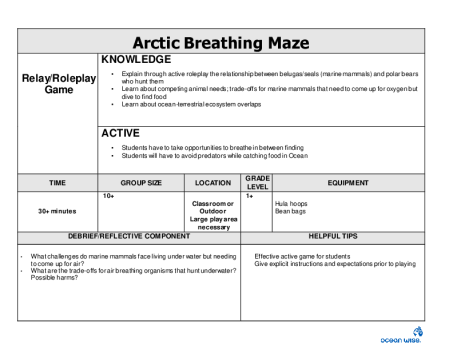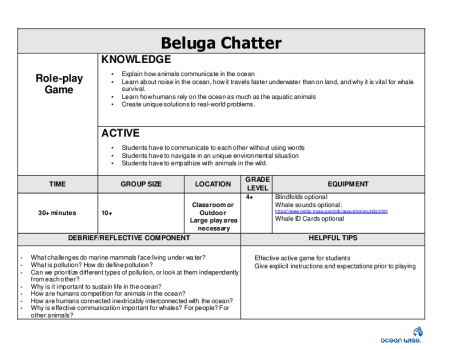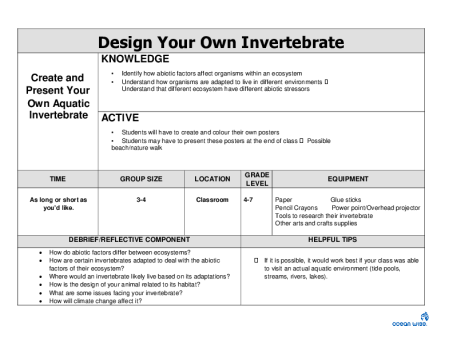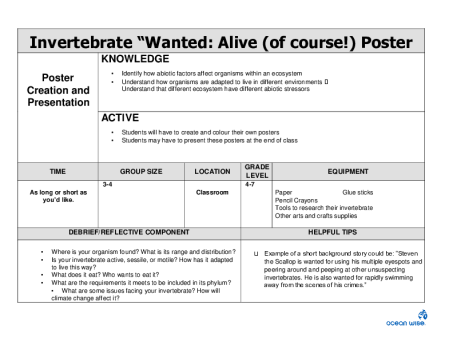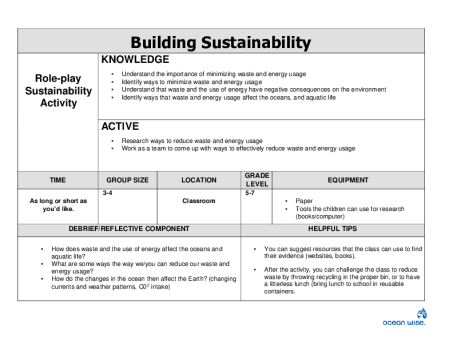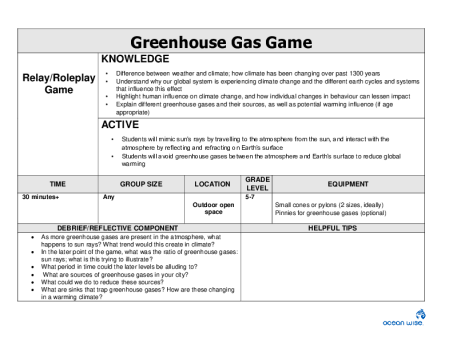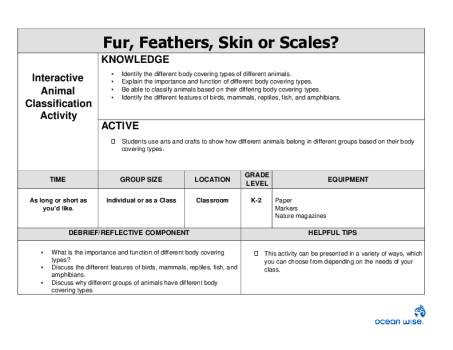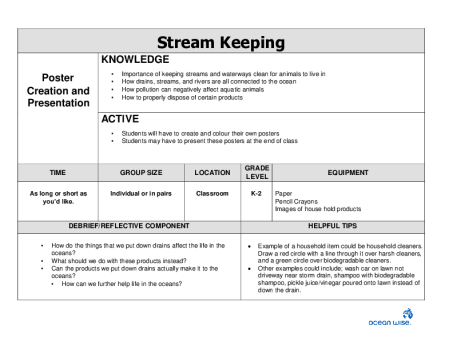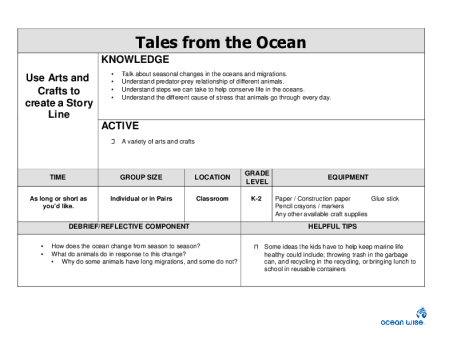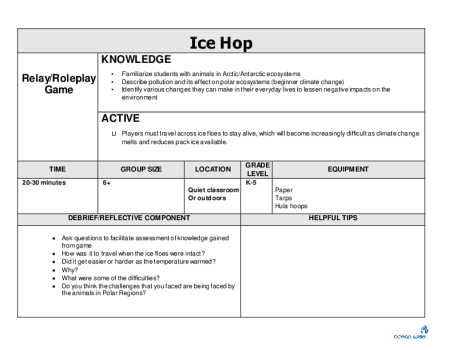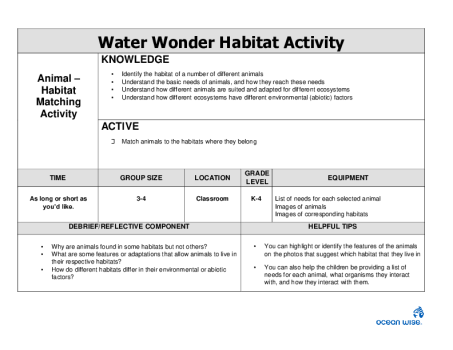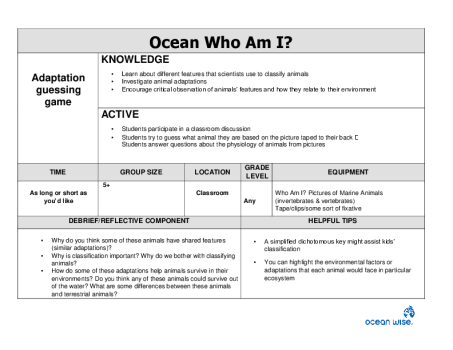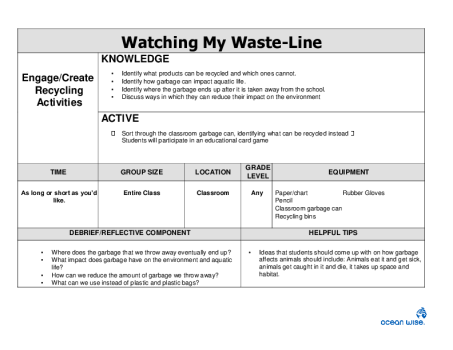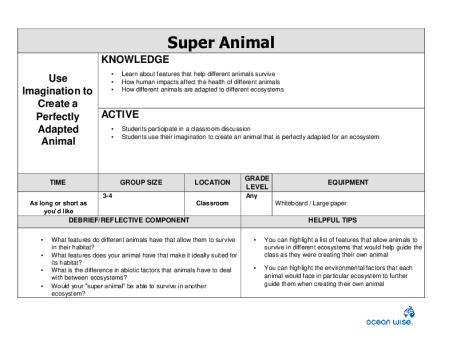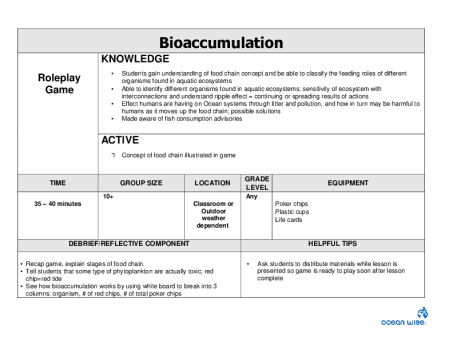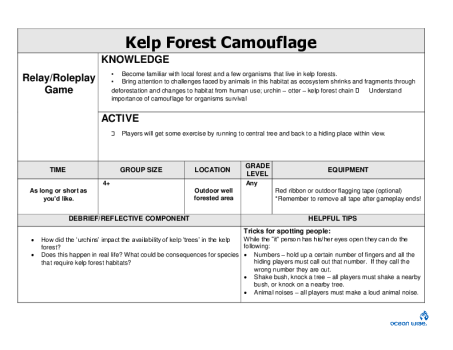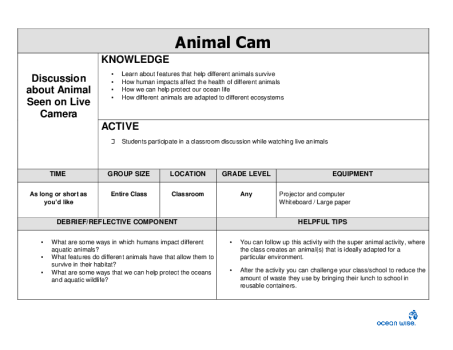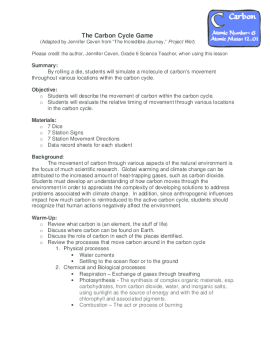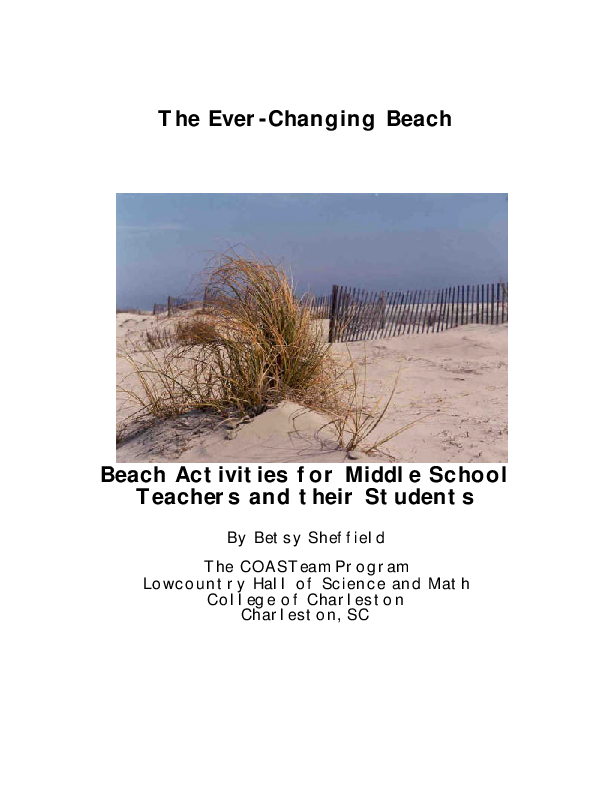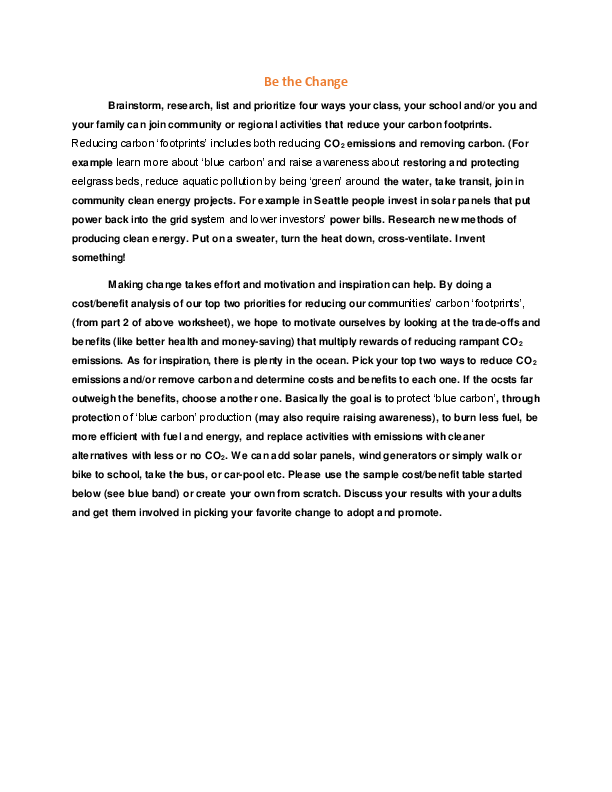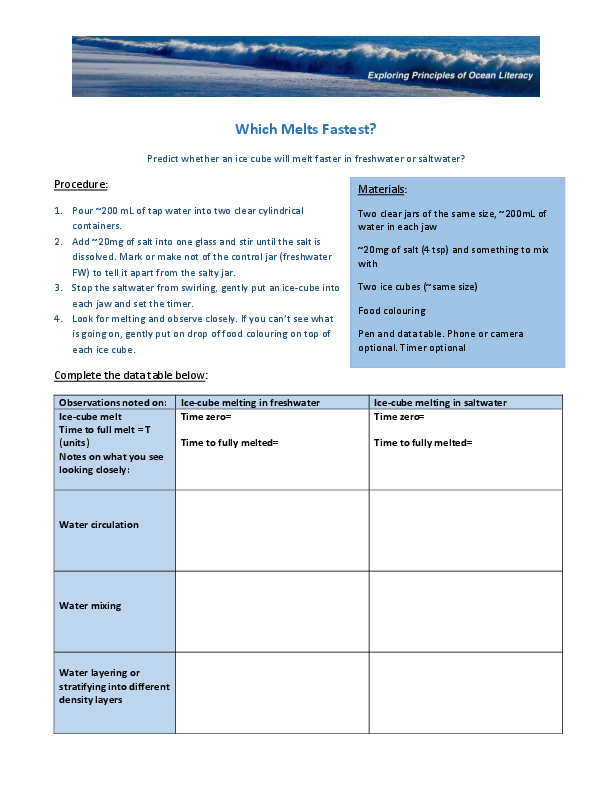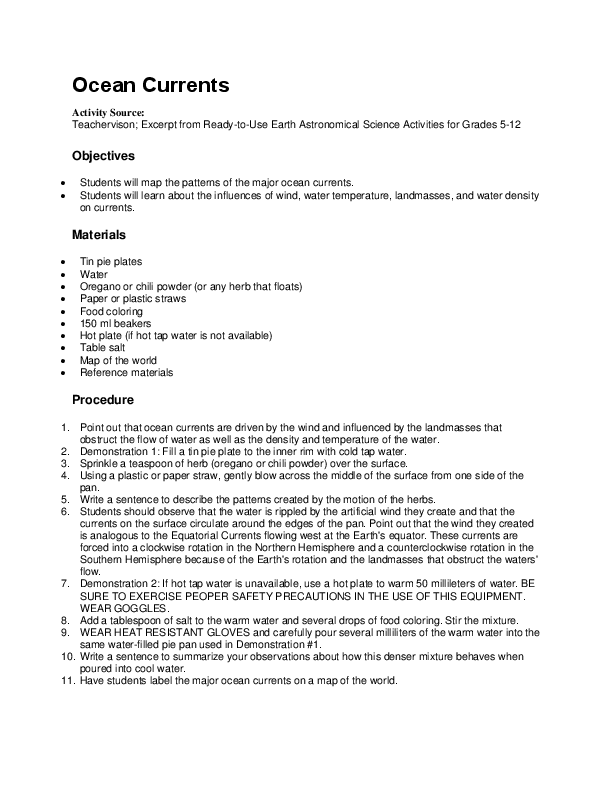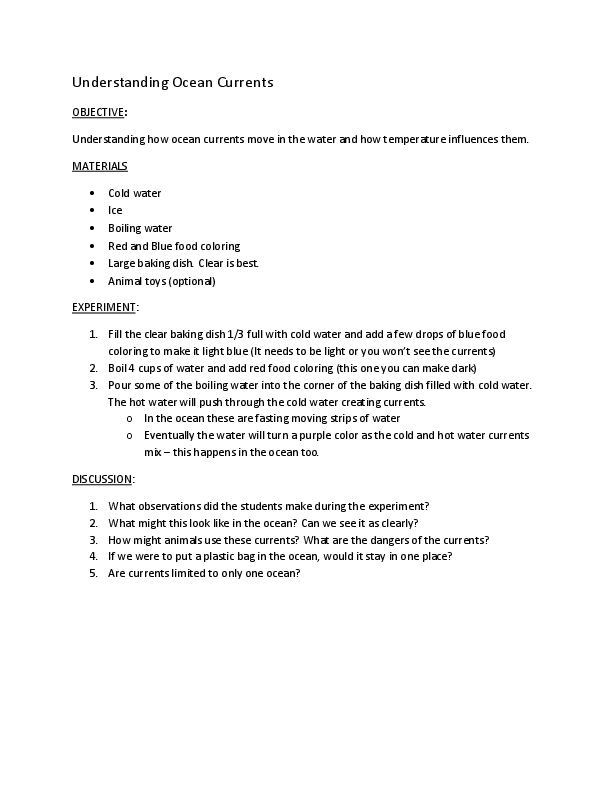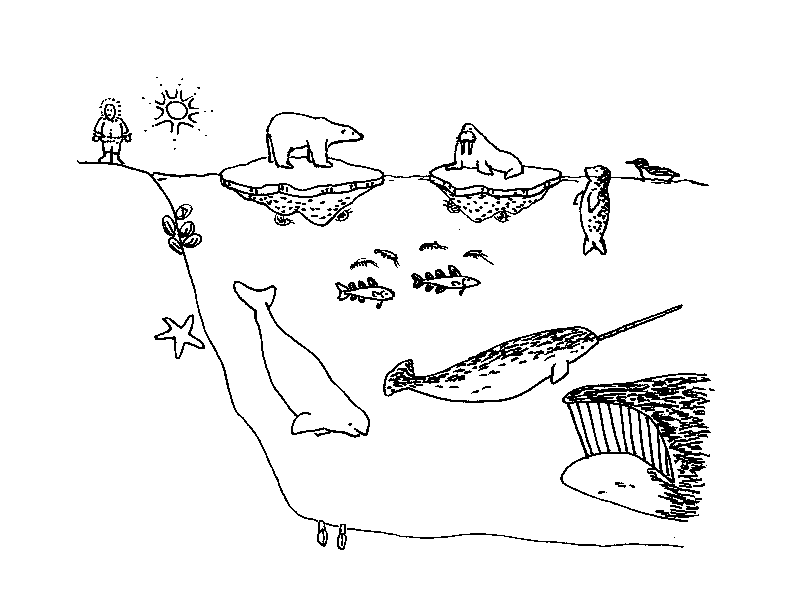Lesson Plans - English
Total: 26
Added by: Rachael B-I
• Explain through active roleplay the relationship between belugas/seals (marine mammals) and polar bears who hunt them
• Learn about competing animal needs; trade-offs for marine mammals that need to come up for oxygen but dive to find food
• Learn about ocean-terrestrial ecosystem overlaps
Jan 9th, 2020
Manage
Added by: Rachael B-I
• Explain how animals communicate in the ocean
• Learn about noise in the ocean, how it travels faster underwater than on land, and why it is vital for whale survival.
• Learn how humans rely on the ocean as much as the aquatic animals
• Create unique solutions to real-world problems.
Jan 9th, 2020
Manage
Added by: Rachael B-I
• Identify how abiotic factors affect organisms within an ecosystem
• Understand how organisms are adapted to live in different environments Understand that different ecosystem have different abiotic stressors
Jan 9th, 2020
Manage
Added by: Rachael B-I
• Identify how abiotic factors affect organisms within an ecosystem
• Understand how organisms are adapted to live in different environments Understand that different ecosystem have different abiotic stressors
Jan 9th, 2020
Manage
Added by: Rachael B-I
• Understand the importance of minimizing waste and energy usage
• Identify ways to minimize waste and energy usage
• Understand that waste and the use of energy have negative consequences on the environment
• Identify ways that waste and energy usage affect the oceans, and aquatic life
Jan 9th, 2020
Manage
Added by: Rachael B-I
Difference between weather and climate; how climate has been changing over past 1300 years
• Understand why our global system is experiencing climate change and the different earth cycles and systems that influence this effect
• Highlight human influence on climate change, and how individual changes in behaviour can lessen impact
• Explain different greenhouse gases and their sources, as well as potential warming influence (if age appropriate)
Jan 9th, 2020
Manage
Added by: Rachael B-I
• Identify the different body covering types of different animals.
• Explain the importance and function of different body covering types.
• Be able to classify animals based on their differing body covering types.
• Identify the different features of birds, mammals, reptiles, fish, and amphibians.
Jan 9th, 2020
Manage
Added by: Rachael B-I
• Importance of keeping streams and waterways clean for animals to live in
• How drains, streams, and rivers are all connected to the ocean
• How pollution can negatively affect aquatic animals
• How to properly dispose of certain products
Jan 9th, 2020
Manage
Added by: Rachael B-I
• Talk about seasonal changes in the oceans and migrations.
• Understand predator-prey relationship of different animals.
• Understand steps we can take to help conserve life in the oceans.
• Understand the different cause of stress that animals go through every day.
Jan 9th, 2020
Manage
Added by: Rachael B-I
• Familiarize students with animals in Arctic/Antarctic ecosystems
• Describe pollution and its effect on polar ecosystems (beginner climate change)
• Identify various changes they can make in their everyday lives to lessen negative impacts on the environment
Jan 9th, 2020
Manage
Added by: Rachael B-I
• Identify the habitat of a number of different animals
• Understand the basic needs of animals, and how they reach these needs
• Understand how different animals are suited and adapted for different ecosystems
• Understand how different ecosystems have different environmental (abiotic) factors
Jan 9th, 2020
Manage
Added by: Rachael B-I
• Learn about different features that scientists use to classify animals
• Investigate animal adaptations
• Encourage critical observation of animals’ features and how they relate to their environment
Jan 9th, 2020
Manage
Added by: Rachael B-I
• Identify what products can be recycled and which ones cannot.
• Identify how garbage can impact aquatic life.
• Identify where the garbage ends up after it is taken away from the school.
• Discuss ways in which they can reduce their impact on the environment
Jan 9th, 2020
Manage
Added by: Rachael B-I
• Learn about features that help different animals survive
• How human impacts affect the health of different animals
• How different animals are adapted to different ecosystems
Jan 9th, 2020
Manage
Added by: Rachael B-I
• Students gain understanding of food chain concept and be able to classify the feeding roles of different organisms found in aquatic ecosystems
• Able to identify different organisms found in aquatic ecosystems; sensitivity of ecosystem with interconnections and understand ripple effect = continuing or spreading results of actions
• Effect humans are having on Ocean systems through litter and pollution, and how in turn may be harmful to humans as it moves up the food chain; possible solutions
• Made aware of fish consumption advisories
Jan 9th, 2020
Manage
Added by: Rachael B-I
• Become familiar with local forest and a few organisms that live in kelp forests.
• Bring attention to challenges faced by animals in this habitat as ecosystem shrinks and fragments through deforestation and changes to habitat from human use; urchin – otter – kelp forest chain Understand importance of camouflage for organisms survival
Jan 9th, 2020
Manage
Added by: Rachael B-I
Learn about features that help different animals survive
• How human impacts affect the health of different animals
• How we can help protect our ocean life
• How different animals are adapted to different ecosystems
Jan 9th, 2020
Manage
Added by: Rachael B-I
Oct 11th, 2017
Manage
Added by: Rachael B-I
Create your own green personal hygiene products at home!
Oct 10th, 2017
Manage
Added by: Rachael B-I
Resource created by Betsy Sheffield, the COASTeam program Sourced from Vancouver Intertidal Field Trips https://madmjones21.wixsite.com/intertidalfieldtrips by Madelyn Muir
Sep 15th, 2017
Manage
Added by: Rachael B-I
Brainstorm, research, list and prioritize four ways your class, your school and/or you and your family can join community or regional activities that reduce your carbon footprints
Jul 7th, 2017
Manage
Added by: Rachael B-I
Examining and comparing the properties of fresh water and salt water through experimentation
Jun 30th, 2017
Manage
Added by: Rachael B-I
Narrative design activity where students get to create the components of their own deep sea ocean expedition
Jun 15th, 2017
Manage
Added by: Rachael B-I
An experiment to understand how the currents in the ocean work. Slightly more complex experiment with extra resources.
Jun 2nd, 2017
Manage
Added by: Rachael B-I
Simple experiment to visually demonstrate how currents move through water, and the relationship between hot and cold water.
Jun 2nd, 2017
Manage
Added by: TobyEslake
Colouring page of the arctic food web. Fill in the colour and the arrows that show how all of these organisms are connected through predator and prey relationships.
Mar 24th, 2017
Manage

